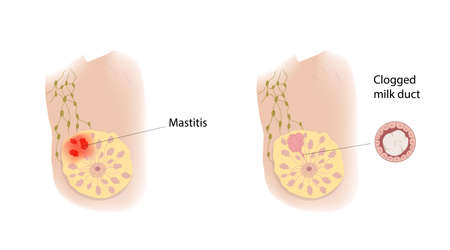Introduction to the Opioid Crisis in America
The opioid crisis is one of the most pressing public health emergencies facing the United States today. It has affected millions of Americans and changed countless lives, impacting families, communities, and the nation’s healthcare system. Understanding how this crisis began and what it looks like now is key to finding ways to respond and support those in need.
How Did the Opioid Epidemic Start?
The roots of the opioid epidemic can be traced back to the late 1990s when pharmaceutical companies reassured healthcare providers that patients would not become addicted to prescription pain relievers. This led to an increase in prescriptions for opioids like oxycodone, hydrocodone, and morphine. Over time, misuse of these medications became widespread, leading to addiction and overdose deaths. As regulations tightened on prescription opioids, many people turned to illegal drugs such as heroin and fentanyl, which are often even more dangerous.
Current Scope of the Crisis
Today, the opioid epidemic continues to evolve. The Centers for Disease Control and Prevention (CDC) reports that over 80,000 people died from opioid overdoses in 2022 alone—more than any previous year. The crisis affects urban, suburban, and rural areas alike, showing that no community is immune.
Key Statistics
| Year | Opioid Overdose Deaths | Most Affected Age Group | Most Common Opioids Involved |
|---|---|---|---|
| 2015 | 33,000+ | 25-44 years | Prescription opioids, heroin |
| 2020 | 69,000+ | 25-54 years | Synthetic opioids (mainly fentanyl) |
| 2022 | 80,000+ | 35-54 years | Synthetic opioids (fentanyl), heroin |
Demographic Trends
The opioid crisis affects people from all walks of life but some groups are especially vulnerable:
- Young adults: Particularly those aged 25–44 have seen higher rates of opioid misuse.
- Rural communities: These areas often lack access to healthcare resources and treatment programs.
- Certain racial and ethnic groups: While originally most common among white populations, recent trends show rising impact among Black and Hispanic communities as well.
- People with mental health conditions: Individuals living with anxiety or depression are at greater risk for opioid misuse.
The Ongoing Challenge
This overview highlights just how complex and far-reaching the opioid crisis has become in America. Its origins in prescription medication misuse have evolved into a widespread problem involving powerful synthetic drugs, affecting diverse populations across the country. Addressing this crisis requires understanding its scope and impact—and will involve coordinated efforts across healthcare, government, communities, and rehabilitation services.
2. Consequences of the Opioid Crisis
Impacts on Individuals
The opioid crisis has deeply affected millions of Americans at a personal level. Many people have developed substance use disorders, making it hard for them to manage daily life. Opioid addiction increases the risk of overdose, which can be fatal or cause long-term health issues. People struggling with opioids often face stigma, making it difficult to seek help or maintain relationships.
Effects on Families
Families are directly impacted when a loved one is dealing with opioid addiction. Parents, children, and spouses may experience emotional distress, financial strain, and disrupted family dynamics. Children living in homes affected by opioid misuse are at higher risk for neglect, foster care placement, and mental health problems.
Strain on Healthcare Systems
The opioid crisis puts tremendous pressure on hospitals, emergency services, and rehabilitation centers across the country. Medical professionals must treat overdoses, manage chronic pain safely, and support long-term recovery efforts. This increased demand leads to higher healthcare costs and resource shortages.
Community-Wide Challenges
Entire communities feel the impact of widespread opioid misuse. There are higher rates of crime related to drug-seeking behavior, decreased workforce productivity, and increased homelessness. Communities also need more resources for prevention programs and support services.
Main Consequences at a Glance
| Area Affected | Key Impacts |
|---|---|
| Individuals | Addiction, overdose deaths, health complications |
| Families | Emotional stress, financial hardship, broken relationships |
| Healthcare Systems | Increased ER visits, higher costs, staff burnout |
| Communities | Crime rise, lost productivity, greater need for social services |
Economic Burdens and Social Challenges
The economic cost of the opioid crisis is staggering. Billions of dollars are spent each year on medical care, lost wages, and criminal justice expenses linked to opioid misuse. Socially, the crisis leads to broken families, less stable neighborhoods, and a greater need for community support systems. Addressing these challenges requires cooperation across healthcare providers, government agencies, and local organizations.

3. National and Local Responses to the Opioid Crisis
The opioid crisis has deeply affected families and communities across America. In response, both national and local organizations have launched a variety of strategies to address this public health emergency. These responses focus on prevention, harm reduction, and treatment, involving government agencies, healthcare professionals, community groups, and people in recovery.
Governmental Policies
The federal government has implemented several key policies to combat the opioid epidemic. Agencies like the Centers for Disease Control and Prevention (CDC), Substance Abuse and Mental Health Services Administration (SAMHSA), and the Department of Health and Human Services (HHS) play major roles. Here are some important federal actions:
| Policy/Program | Main Focus | Key Actions |
|---|---|---|
| CDC Opioid Prescribing Guidelines | Prevention | Encourage safer prescribing practices among doctors |
| SUPPORT Act (2018) | Treatment & Recovery | Expands access to addiction treatment services and medication-assisted treatment (MAT) |
| Prescription Drug Monitoring Programs (PDMPs) | Prevention | Track prescriptions to prevent misuse and doctor shopping |
| SAMHSA Grants | Treatment & Harm Reduction | Provide funding for state and community-level programs targeting substance use disorder (SUD) |
Public Health Initiatives
Public health agencies at both national and local levels work together to raise awareness, provide education, and support harm reduction efforts. Some common initiatives include:
- Naloxone Distribution: Making naloxone (Narcan), an opioid overdose reversal medication, widely available in the community—especially to first responders, schools, and families.
- Education Campaigns: Informing people about the dangers of opioid misuse, safe medication storage, and how to recognize signs of overdose.
- Syringe Exchange Programs: Providing clean syringes to reduce the spread of infectious diseases like HIV and hepatitis C among people who inject drugs.
- Mental Health Support: Integrating mental health services with addiction care to address underlying issues contributing to substance use.
Community-Based Approaches
Local communities are vital in fighting the opioid crisis. Grassroots organizations, faith-based groups, schools, employers, and even individuals all contribute through different programs. Community-based responses often include:
- Peer Recovery Coaching: People in recovery help others find resources, stay motivated, and build support networks.
- Youth Prevention Programs: Schools educate students about risks related to opioids and promote healthy coping skills.
- Family Support Groups: Families affected by opioid use disorder can attend groups like Al-Anon or local support meetings for guidance and encouragement.
- Diversion Programs: Instead of jail time for low-level drug offenses, some areas offer treatment options as an alternative path toward recovery.
The Role of Rehabilitation Professionals
Rehabilitation experts play a crucial part in these responses by helping individuals manage pain safely without relying on opioids, supporting long-term recovery plans, and teaching life skills needed for a successful return to daily life. Whether working in hospitals, outpatient clinics, or community centers, rehab professionals collaborate with other healthcare workers to deliver integrated care that supports both physical healing and emotional well-being.
Summary Table: Examples of National & Local Responses
| Response Type | Description |
|---|---|
| Federal Policy | Laws like the SUPPORT Act increase treatment access nationwide. |
| Public Health Initiative | Naloxone distribution saves lives in cases of overdose emergencies. |
| Community Program | Youth education programs teach students about drug risks early on. |
The fight against the opioid crisis involves everyone—from policymakers to parents—and relies on strong partnerships between national leadership and grassroots efforts. By combining prevention, harm reduction, treatment, and rehabilitation services, communities across America are working toward a healthier future for all.
4. The Role of Rehabilitation in Opioid Recovery
Understanding Rehabilitation in Opioid Recovery
The opioid crisis has deeply affected communities across America, touching lives from all walks of life. Recovery from opioid addiction is a challenging journey that requires more than just medical detoxification or medication. Rehabilitation plays a critical role in helping individuals regain control over their lives, offering support for the physical, psychological, and social aspects of healing.
Physical Rehabilitation: Restoring Health and Function
Opioid misuse can take a serious toll on the body, leading to weakness, chronic pain, and reduced mobility. Physical rehabilitation helps individuals rebuild strength and function through personalized exercise programs and pain management strategies. The goal is to help people return to daily activities and improve their quality of life without relying on opioids.
| Physical Challenges After Opioid Use | Rehabilitation Strategies |
|---|---|
| Muscle weakness | Strength training exercises |
| Chronic pain | Pain management techniques, alternative therapies |
| Poor balance or coordination | Balance and flexibility exercises |
| Fatigue or low energy | Gradual activity progression, nutrition education |
Psychological Rehabilitation: Supporting Mental Health
Addiction affects mental health in many ways, including increased anxiety, depression, and difficulty coping with stress. Psychological rehabilitation provides counseling and therapy to address these issues. Techniques like cognitive behavioral therapy (CBT), mindfulness training, and group support sessions help individuals develop healthier thought patterns and build resilience during recovery.
Social Integration: Building a Supportive Community
The path to recovery is easier with strong social support. Rehabilitation programs connect people with resources such as job training, educational opportunities, housing assistance, and peer support groups. By addressing social needs, rehabilitation helps individuals reintegrate into society and reduces the risk of relapse.
| Social Barriers in Recovery | Rehabilitation Solutions |
|---|---|
| Lack of stable housing | Housing referrals and assistance programs |
| Unemployment or job loss | Job training and employment services |
| Stigma from community or family | Peer support groups and family counseling |
| Limited access to healthcare | Connection to local clinics and health services |
The Importance of Comprehensive Care in Recovery
No single approach works for everyone recovering from opioid addiction. Combining physical rehabilitation, mental health support, and social integration creates a more complete care plan that addresses each person’s unique needs. This holistic approach increases the chances of long-term recovery and helps people build a healthy future beyond addiction.
5. Future Directions and Opportunities for Improvement
Exploring New Approaches in Rehabilitation
The opioid crisis continues to challenge communities across the United States, but emerging strategies offer hope for better outcomes. Innovative rehabilitation models are being developed to address not just addiction, but also the underlying physical and mental health needs of individuals. These new approaches often combine medication-assisted treatment (MAT), behavioral therapy, and community support to help people recover more effectively.
Innovative Rehabilitation Models
| Model Name | Main Features | Potential Benefits |
|---|---|---|
| Integrated Care Programs | Combines primary care, mental health services, and addiction treatment under one roof | Improves access to care, reduces stigma, supports whole-person recovery |
| Telehealth Rehab Services | Delivers counseling and therapy via phone or video calls | Makes rehab more accessible, especially in rural areas; supports continuity of care |
| Peer Support Initiatives | Connects individuals in recovery with trained peer mentors who have lived experience | Builds trust, offers real-world advice, increases engagement in rehab programs |
| Community-Based Recovery Centers | Offers local resources like job training, housing support, and group activities alongside treatment | Supports long-term recovery by addressing social determinants of health |
Policy Recommendations for Lasting Change
To make a real difference in fighting the opioid crisis, changes at the policy level are needed. Some key recommendations include:
- Expanding Insurance Coverage: Ensure that all Americans can access comprehensive rehabilitation services without financial barriers.
- Promoting Harm Reduction: Support safe prescribing practices, wider access to naloxone (an overdose-reversing drug), and syringe exchange programs to reduce harm.
- Investing in Training: Provide healthcare providers with more education about pain management alternatives and recognizing substance use disorders early.
- Supporting Research: Fund studies on new rehab methods and long-term recovery outcomes to keep improving care.
- Tackling Stigma: Launch public awareness campaigns to reduce the shame around addiction and encourage people to seek help.
The Need for Ongoing Advocacy and Research
The fight against opioid misuse is ongoing. Community leaders, healthcare professionals, families, and people in recovery all play important roles in advocating for better support systems. Continued research into what works—and what doesnt—will drive improvements in rehabilitation. By working together and staying focused on innovation and compassion, America can move toward a future where fewer lives are lost to opioids and more people find lasting recovery.


